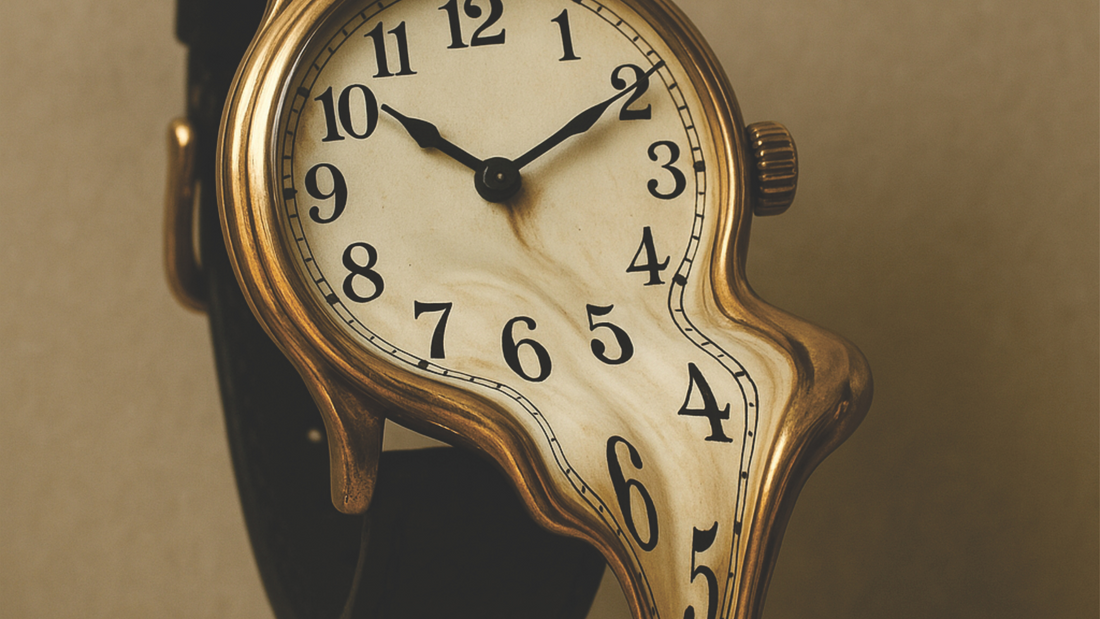
Share
7 Everyday Objects That Secretly Influence How You Think
We like to believe that our thoughts are self-generated, emerging purely from intellect and intention. Yet, research in psychology, neuroscience, and design repeatedly demonstrates that the physical environment—often down to the most mundane objects—shapes perception, cognition, and even moral judgments. At Antithesis, we consider awareness of these subtle influences as a key step toward intellectual sovereignty: recognizing the objects that quietly mold our minds allows us to reclaim agency over our internal landscape.
This blog examines seven everyday objects that subtly shape thought and why noticing them can transform how you live intentionally.
1. Mirrors
Mirrors are far more than decorative elements; they alter self-perception and decision-making. Seeing oneself reflected can increase self-awareness and activate moral reasoning. A classic study found that participants placed in front of a mirror were more likely to choose ethical behaviors, such as refusing to cheat in a game, compared to those without visual reflection (1).
- Example: In early design experiments, architects discovered that placing reflective surfaces in classrooms improved student attentiveness, presumably because self-awareness motivates alignment with personal or social norms.
2. Clocks and Timepieces
Timepieces not only inform but subtly pressure cognition. Studies suggest that visible clocks can induce time scarcity, which increases stress but also sharpens short-term focus (2). Conversely, absence of temporal cues encourages expansive, creative thinking.
- Historical Insight: Leonardo da Vinci often avoided strict schedules, allowing his projects to develop organically. Modern productivity science confirms that reduced time cues can improve deep work and cognitive flexibility.
3. Chairs and Seating
Physical posture profoundly influences thought patterns. Upright postures increase assertiveness and confidence, whereas slouched positions correlate with decreased cognitive control and susceptibility to suggestion (3).
- Example: University classrooms with hard-back upright chairs saw increased class participation and attentiveness compared to more relaxed seating. Objects as simple as a chair can subtly prime the brain toward either passivity or engagement.
4. Lighting
Lighting conditions shape cognitive performance and emotional state. Exposure to blue-enriched lighting improves alertness and analytical reasoning, while dim warm light fosters relaxation and creative association (4).
- Real-world Application: Tech companies designing innovation labs often manipulate light spectra to alternate between analytical and creative task phases.
5. Clutter and Desk Objects
The arrangement—or disarray—of objects on a desk or workspace influences attention, stress, and creativity. Moderate clutter can stimulate creative thinking, whereas extreme clutter or excessive minimalism can impair focus (5).
- Example: Albert Einstein reportedly kept a relatively cluttered workspace during peak theoretical exploration periods, suggesting that a certain visual complexity primes associative thinking.
6. Color of Objects
Color affects perception, mood, and cognitive processing. Red surfaces can enhance attention to detail, while blue promotes expansive thinking and creativity (6).
- Practical Insight: Designers use this principle to influence user behavior—financial dashboards often favor red for warnings (attention) and blue for analysis (broader thinking). Recognizing color cues helps one consciously manage their cognitive context.
7. Objects That Suggest Motion
Even static objects that imply movement—curved lines, angled shapes, or suspended mobiles—can activate motor planning networks and energize thought processes. Neuroscience research shows that perceived motion in objects primes action-related cognition (7).
- Historical Note: Kinetic sculptures in the early 20th century, such as those by Alexander Calder, were designed not merely for visual intrigue but to subtly stimulate viewers’ perception of energy and dynamism.
The Intellectual Implication
Everyday objects operate as silent cognitive primers. Mirrors heighten self-awareness, clocks shape temporal perception, chairs affect posture-based cognition, lighting tunes mood and reasoning, clutter influences creativity, color biases thought style, and motion cues energize mental activity. Recognizing these invisible influences equips us to manipulate our own environment deliberately, choosing objects that foster the cognitive states we desire rather than falling prey to unconscious programming.
At Antithesis, the act of noticing and curating these environmental cues becomes an exercise in intentionality. In a culture that increasingly designs spaces to automate attention and behavior, understanding how objects shape thought is a subtle but powerful form of intellectual defiance.
References
- Duval, S., & Wicklund, R. A. (1981). A theory of objective self-awareness. Journal of Personality and Social Psychology, 50(3), 631–639. link
- Shah, A. K., & Oppenheimer, D. M. (2010). The time-pressure paradox: How clocks shape cognition. Journal of Experimental Social Psychology, 46(3), 489–494. link
- Peper, E., Lin, I. M., Harvey, R., & Perez, R. (2010). Posture and its effects on cognition. Psychology of Sport and Exercise, 11(6), 572–578. link
- Vandewalle, G., Maquet, P., & Dijk, D. J. (2014). Light and cognition: Blue-enriched lighting improves alertness. Light Research & Technology, 46(3), 330–340. link
- Vohs, K. D., Redden, J. P., & Rahinel, R. (2013). Physical order produces healthy choices, generosity, and conventionality. Psychological Science, 24(9), 1860–1867. link
- Mehta, R., & Zhu, R. (2009). Blue or red? The effect of color on cognitive task performance. Science, 323(5918), 1226–1229. link
- Kourtzi, Z., & Kanwisher, N. (2000). Activation in human MT/MST by static images with implied motion. Journal of Cognitive Neuroscience, 12(1), 48–55. link






